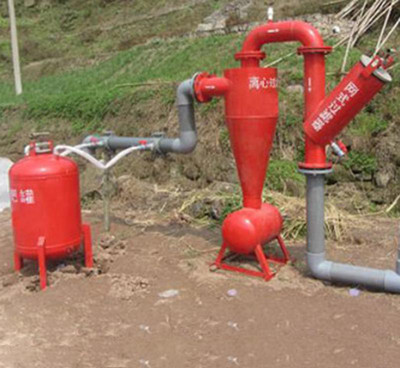A brief discussion on the daily maintenance of drip irrigation filters
As drip irrigation systems are less resistant to clogging, precipitation filtration is required before irrigation water enters drip irrigation systems. Drip irrigation systems usually have filters installed. Filter is a very important part of drip irrigation system. It must be maintained regularly to extend the service life of filter and ensure the normal operation of drip irrigation system.
For filters, check filters and pipes frequently for damage and leaks, and the filtration system must be thoroughly cleaned and drained at the end of the irrigation season. The filtration system must be flushed when the following conditions occur during operation:
1. System flow decreases. Partially clogged filters reduce flow and increase head loss, while maintaining the same flow leads to increased energy consumption, a departure from drip irrigation's energy-saving philosophy.
2. Pressure difference of filter increases. The increase of the pressure difference between the upper and lower reaches of the filter element may cause sediment to enter the filter medium, which may cause permanent blockage to the mesh filter and make it difficult to clean up. In some cases the filter inlet and outlet too large pressure difference may also cause physical damage to the screen.
The flushing of the filter may be done manually or automatically, but regardless of its use, one or more measures should be taken for regular flushing. The following are common flushing controls:
1. Pressure difference control flushing. Flush when the pressure difference between inlet and outlet of the filter exceeds the predetermined value. This step-down can be automatically flushed by a differential pressure sensor, or manually flushed by two pressure gauge indications.
2, volume table control flushing. When the predetermined amount of water passes through the strainer, automatic flushing begins. The predetermined value of water quantity is determined mainly according to the water quality, and its measurement mainly depends on the meter.
3, the timing flushing machine according to the set fixed time interval flushing. The time interval is determined mainly from the operator's practical experience.
Common drip irrigation filters mainly include sand and gravel filter, laminated filter and mesh filter. No matter which filter is used in drip irrigation system, it should be regularly maintained and troubleshooting to ensure the smooth progress of drip irrigation system.
In drip irrigation systems, usually with field drip irrigation and drip irrigation, greenhouse in field irrigation, irrigation area is compared commonly big, so generally use the centrifuge and filter network combination of cast iron, cast iron centrifugal screen filter with three and four inches, drip irrigation in the greenhouse, because the area is small, often use the plastic mesh filter, usually with 2 inch (63), 1.5 inch (50), 1.2 inch (40), 1 inch (32), and other specifications, in a drip irrigation system, the filter is indispensable in the structure.






